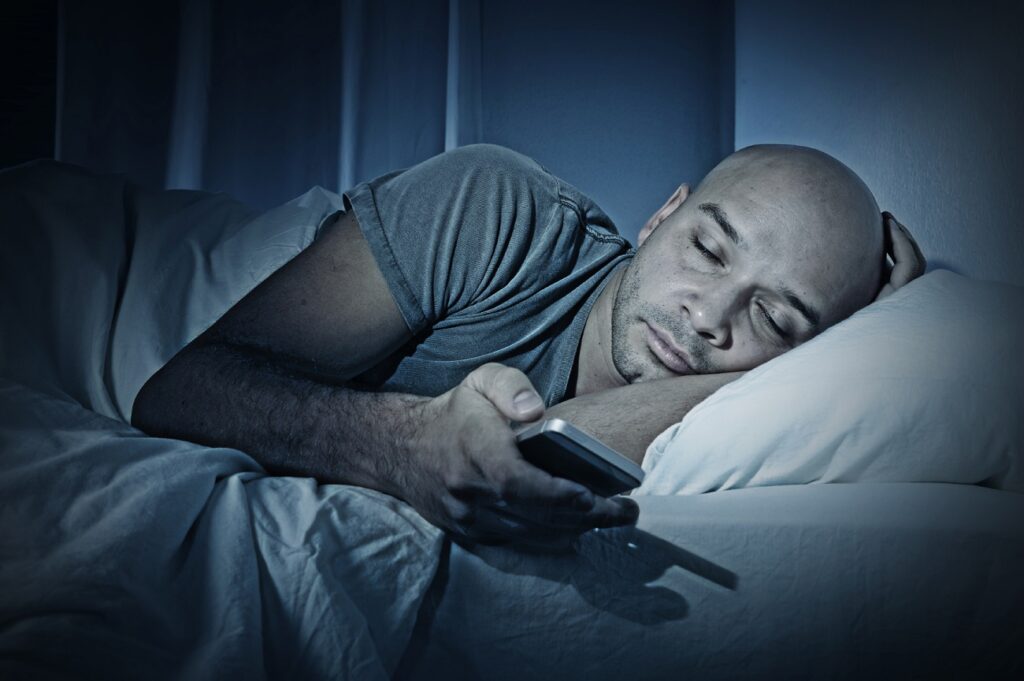In this series we look at an aspect of science that gets too little (in our view) attention in business and that’s what we eat, how we move our body and use our brain. Take a look at the whole series here!
Normally, your brain starts progressively increasing the hormone melatonin around 9 or 10 pm, which makes you sleepy.
Melatonin acts as a marker of your circadian phase or biological timing. In a nutshell, this hormone influences what time of day or night your body thinks it is, regardless of what time the clock on the wall displays.
Besides regulating your sleep cycle, it also provides other important health benefits, including helping to prevent cancer.
Wavelength from electronic devices can suppress melatonin production. Red and amber lights will not suppress melatonin, while blue, green, and white lights will.
This is because these are the wavelengths that are the most common outdoors during daytime hours.
Wavelength from electronic devices can suppress melatonin production.
So avoid the blue light wavelength after sunset or in the summer a few hours before you plan to go to bed. This includes artificial light, and light emitted by electronics such as your TV, computer, and other electronic screens.
There are a number of ways to avoid blue light in the evening depending on your lifestyle and personal preferences:
Turn off or dim all lights after sunset, and avoid watching TV or using light emitting electronics for at least one hour before bedtime (ideally two hours or more). Research has shown that using an electronic device within one hour of bedtime can delay falling asleep for more than an hour – specifically for adolescents.
Red and amber lights will not suppress melatonin, while blue, green, and white lights will.
Another study that compared melatonin profiles in individuals exposed to standard room light found that exposure to room light before bedtime shortened the time to elevated melatonin levels by about 90 minutes.
That means it may take you an extra hour and a half before you're sleepy enough to fall asleep once you're in bed. Combine room light and electronic displays right before bed and it's easy to see how sleep may remain elusive for hours on end.
If using a computer or smart phone, install blue light-blocking software like f.lux. The program automatically alters the color temperature of your screen as the day goes on, pulling out the blue wavelengths as it gets late. Or you can now buy amber colored glasses that block blue light.
Avoid the blue light wavelength after sunset or in the summer a few hours before you plan to go to bed.
Studies have confirmed that when using blue-blocking glasses, people produce as much melatonin as they do in dim light, even if they're in a lit room or using light emitting technology.
Other studies have shown that people using blue-blocking glasses after around 8.30 pm had major improvements in both sleep quality and mood. You can get a Uvex model on Amazon for £13 which claims to eliminate virtually all blue light.










